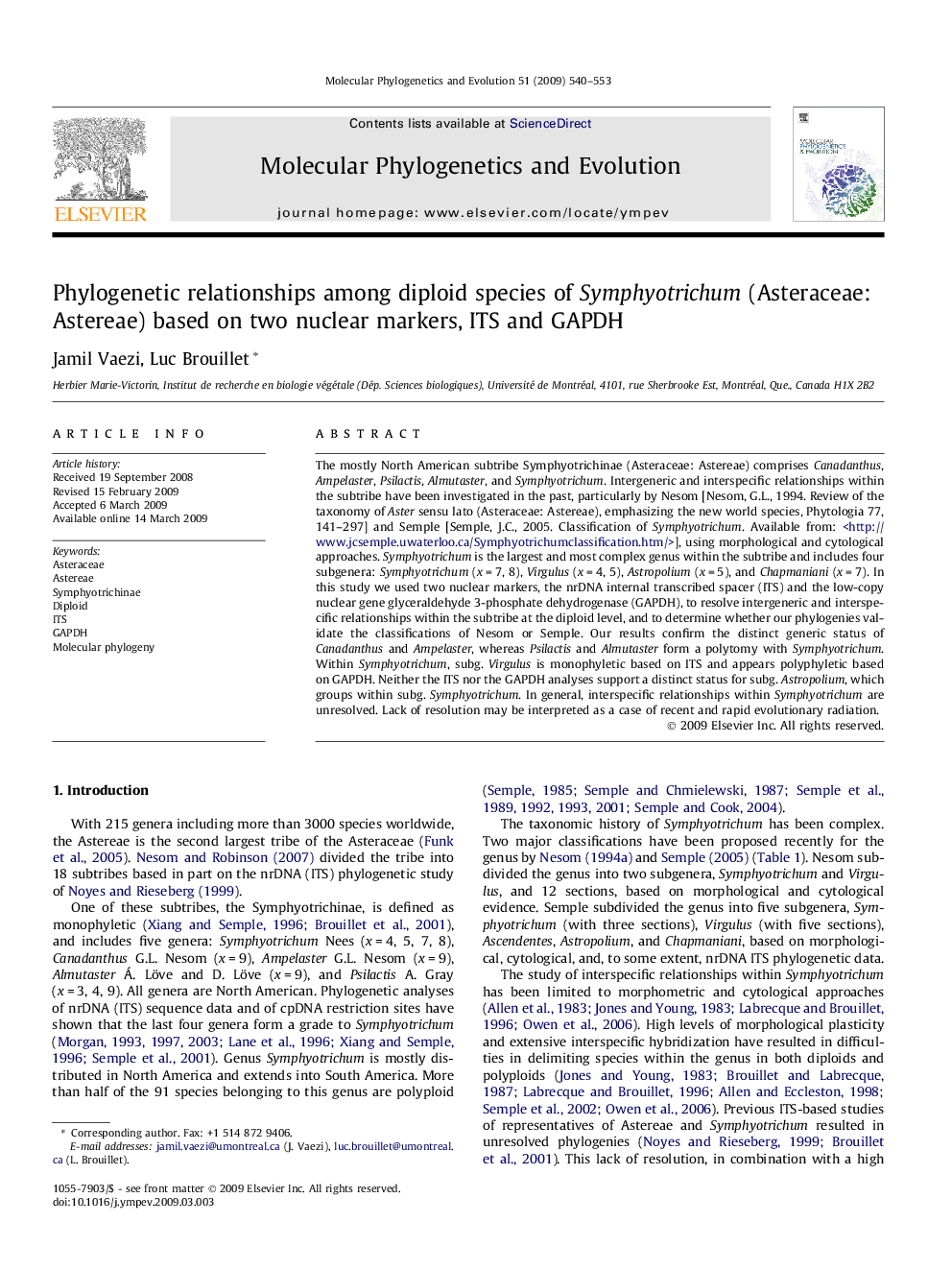| Article ID | Journal | Published Year | Pages | File Type |
|---|---|---|---|---|
| 2834707 | Molecular Phylogenetics and Evolution | 2009 | 14 Pages |
The mostly North American subtribe Symphyotrichinae (Asteraceae: Astereae) comprises Canadanthus, Ampelaster, Psilactis, Almutaster, and Symphyotrichum. Intergeneric and interspecific relationships within the subtribe have been investigated in the past, particularly by Nesom [Nesom, G.L., 1994. Review of the taxonomy of Aster sensu lato (Asteraceae: Astereae), emphasizing the new world species, Phytologia 77, 141–297] and Semple [Semple, J.C., 2005. Classification of Symphyotrichum. Available from:
